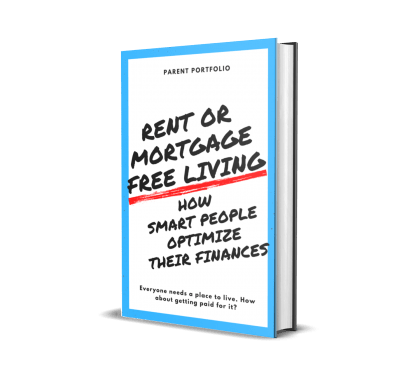How To Apply The KonMari Method To Organize Your Money

Learn how to use the Marie Kondo method to spark joy with your personal finances. The Marie Kondo method is all anyone is talking about and I’ve discovered a way to use the konmari method for minimalist living and to save you money.
Who is Marie Kondo?
Marie Kondo is THE 2019 hit on Netflix. After about two weeks of hearing about her from my wife and just about everywhere on social media, I knew I had to see what the buzz was about.
Marie is a Japanese organization consultant that’s come up with this revolutionary idea not only to declutter but as a way to be more positive and happier in the process.
Watching her videos, my first thought was this could be an amazing way to help people with their finances as well.
I’ve studied the KonMari method and adapted it to a system that will not only help you beat your debt but also be happier in a minimalist lifestyle.
That’s one of the great things about the KonMari method is that while it’s a defined system, it leaves a lot of room for how you interpret it. It lets you put your mark on the process so it’s great for thinking through creatively how it can be used in other parts of your life.
So let’s look at the system and how you can use it to spark joy with your money. I’m going to reveal the five rules of KonMari finances and then share three tips that will guarantee your success so stick around for that at the end of the video.
Six Rules of the KonMari Method
There are six basic rules in the Konmari method of minimalism. We’ll look at them here and then add more detail as we talk about how to use the method to tidy up your finances.
First is you have to commit yourself to tidying up. That’s going to be important not just to get started but keeping your budget under control.
Next is to imagine your ideal lifestyle This is one of the most powerful things I teach in our goals-based investing strategy, making your goals real, making that mental picture of your ideal goals so they always motivate you.
Third here is to finish discarding first. With Marie Kondo’s method, this means working through that entire pile of clothes or whatever before you start putting things away. This is also where one of the quirkier things happens where you actually thank each item for serving its purpose.
Fourth I the Konmari rules is tidying by category, not be room. This is probably the most revolutionary part of the system and I’ve got a great idea for using it with your finances we’ll talk about in a bit.
Rule five is to follow a specific order. So for Konmari, that’s clothes, books, papers, komono or miscellaneous items, and sentimental items. There’s a special reason for this and it’s also going to really help you with your bills.
Finally here, the last rule is to ask yourself if each item sparks joy and if you haven’t watched Marie Kondo explain this herself, it’s a great little emotive explanation.
How to Use the Marie Kondo Method for Finances
So first, instead of committing to tidying up, you need to commit to a better financial future. You can start with some long-term goals like paying off your non-mortgage debt or saving up three months for an emergency fund.
The real trick here though is to set specific short-term goals that will feed into those long-term ones. For example, for saving up your emergency fund, you might set a one-month goal of finding two or three expenses you can cut in half. For paying down debt, maybe you set a three-month goal of paying off a credit card or a loan.
The commitment here is that you won’t let anything stop you from reaching those short-term goals. Since they’re only a month or two, you’ll be able to see the light at the end of the tunnel and they’re going to be easier to beat as opposed to just jumping into paying off all your debt.
Our next Marie Kondo method rule is to imagine that ideal lifestyle, making your goals real. This is hugely important and I don’t think most people really appreciate it. You see, the problem is that people spend about five seconds thinking about what they want in life. They might think they need a million dollars or they don’t want to work anymore, but they have no idea what that actually looks like.
With this kind of vague goals in mind, it’s no surprise that the budget goes right out the window the first moment saving gets tough. Those goals mean nothing because they aren’t real.
Making your goals real means creating a mental picture, imagining your ideal lifestyle as Marie says. That means closing your eyes and making a story of where you’ll be, what you’ll do on a daily basis, the people around you. Do this at least once a week for that first month, reliving your perfect lifestyle.
What this does is, any time budgeting gets tough, anytime you’re tempted to overspend, you can take out that mental picture and it’s going to be all the motivation you need to stick to your plan.
I’m going to take the KonMari rules three and four out of place here. So next we have tidy by category and this is a great one for your finances. A lot of people just look at their entire budget all at once to see if they can save. It’s overwhelming looking at all your spending at once and you’ll never get anywhere.
Instead, after writing out all your expenses, separate them into categories like housing, food, transportation, entertainment and Janku. Janku is all that other stuff you spend money on. You know, the stuff that should be spelled shhhhtuff you probably don’t need.
Looking at the categories together, like in the KonMari method, can really help show you how much you spend in a certain area. This especially works with entertainment spending, everything you pay for like going out, cable TV, movies.
In the KonMari method, you go through and physically touch every item. You hold it up to see if it sparks joy just by holding it and thinking about it. This is obviously a little harder to do with expenses and bills but there is something you can try.
Instead of just listing out all your debts, bills and expenses, get a picture that represents each one. Print out or get a picture that represents that expense in your mind so you can have that experience of physically holding it up and thinking about it.
I love the rituals in the KonMari method, from the silent prayer to thanking and touching each item. This is so important to organizing your finances because so often, we just briefly put those plans together in our head but we don’t really carry them out or develop them in detail. By going through these rituals, you’re going to remember your plans, you’re going to be committed to them and you’re going to achieve them.
Whether something sparks joy is a tough one for Marie Kondo clients, understanding that idea of how to feel joy from your possessions. I think this is actually a point that’s easier in KonMari finances because you can think to the experiences around your individual expenses. Is eating out three times a week or that $9 mocha-coca-chino every day really sparking joy in your life?
In the Kondo method, you explicitly thank each object for serving its purpose before getting rid of it. This might work for some of your expenses but I wonder if it might work better with your debt if you actually yell at them. Really, just let them have it with how much frustration and pain and misery they’ve caused you. Just acting out this kind of hatred towards your debt can be a liberating feeling and build that sense of commitment.
I’m not sure the order is as important in KonMari finances as it is with tidying up your house. Maybe start with your entertainment expenses and other categories that are going to be easiest to cut. That will give you a sense of accomplishment before you try cutting from the harder categories like housing and transportation.
Marie Kondo Tips for Success
Now that we have those five steps in KonMari finances, I want to give you three tips that will guarantee you get the most from the process. Even if you don’t become a Buffett or Rockefeller with the process, these three tips are going to help you fix your finances.
First here is that the whole family needs to be committed to the process. I’ve seen couples torn apart and I’ve seen the frustration in a family that’s not on the same page with their finances. You shouldn’t expect everyone to become a natural saver overnight but everyone needs to do their share.
The way you do this is by starting the conversation around your goals. Talking about what you want to do and imagining that ideal lifestyle together is going to take the conversation off money, who spends what and who saves. From those shared goals, the conversation is going to naturally flow into how much you’ll need to get there. This way, everyone sees how much needs to be saved and where sacrifices need to be made.
Next is don’t expect to fix your finances overnight. Unlike your closet, tidying up your finances isn’t going to happen in a weekend. It’s going to be so important to make those short-term goals you can reach in three months. Those shorter goals are easier to reach and will constantly motivate you.
Even better, that’s just over the time it takes to break a bad habit and create a good one so even if you fall back a little on your plans, you’ll have created the good habits that will help you save. Our third tip for the KonMari method is to be open to the process and let it evolve for your needs.
KonMari isn’t about being a minimalist or that you have to be frugal. It’s about getting the most happiness from what you have and it’s the same way using the Marie Kondo method for finances. This isn’t about cutting your budget to the bone but about getting the max happiness from your spending.






